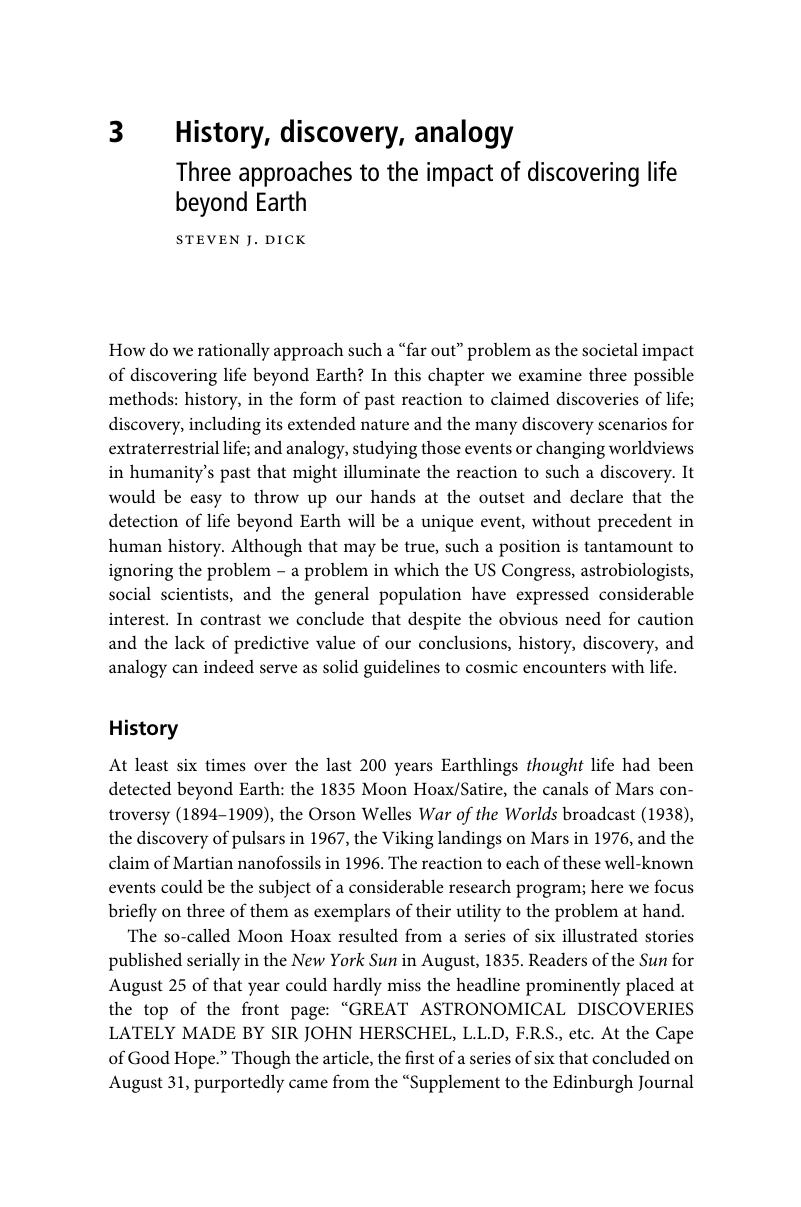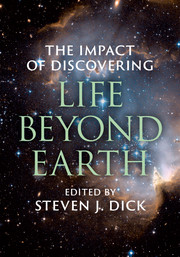Book contents
- Frontmatter
- Dedication
- Contents
- List of contributors
- Introduction: Astrobiology and society
- Part I Motivations and approaches: How do we frame the problems of discovery and impact?
- 1 Current approaches to finding life beyond Earth, and what happens if we do
- 2 The philosophy of astrobiology: The Copernican and Darwinian philosophical presuppositions
- 3 History, discovery, analogy: Three approaches to the impact of discovering life beyond Earth
- 4 A multidimensional impact model for the discovery of extraterrestrial life
- Part II Transcending anthropocentrism: How do we move beyond our own preconceptions of life, intelligence, and culture?
- Part III Philosophical, theological, and moral impact: How do we comprehend the cultural challenges raised by discovery?
- Part IV Practical considerations: how should society prepare for discovery – and non-discovery?
- Contributor biographies
- Index
- References
3 - History, discovery, analogy: Three approaches to the impact of discovering life beyond Earth
from Part I - Motivations and approaches: How do we frame the problems of discovery and impact?
Published online by Cambridge University Press: 05 November 2015
- Frontmatter
- Dedication
- Contents
- List of contributors
- Introduction: Astrobiology and society
- Part I Motivations and approaches: How do we frame the problems of discovery and impact?
- 1 Current approaches to finding life beyond Earth, and what happens if we do
- 2 The philosophy of astrobiology: The Copernican and Darwinian philosophical presuppositions
- 3 History, discovery, analogy: Three approaches to the impact of discovering life beyond Earth
- 4 A multidimensional impact model for the discovery of extraterrestrial life
- Part II Transcending anthropocentrism: How do we move beyond our own preconceptions of life, intelligence, and culture?
- Part III Philosophical, theological, and moral impact: How do we comprehend the cultural challenges raised by discovery?
- Part IV Practical considerations: how should society prepare for discovery – and non-discovery?
- Contributor biographies
- Index
- References
Summary

- Type
- Chapter
- Information
- The Impact of Discovering Life beyond Earth , pp. 38 - 54Publisher: Cambridge University PressPrint publication year: 2015
References
- 1
- Cited by



